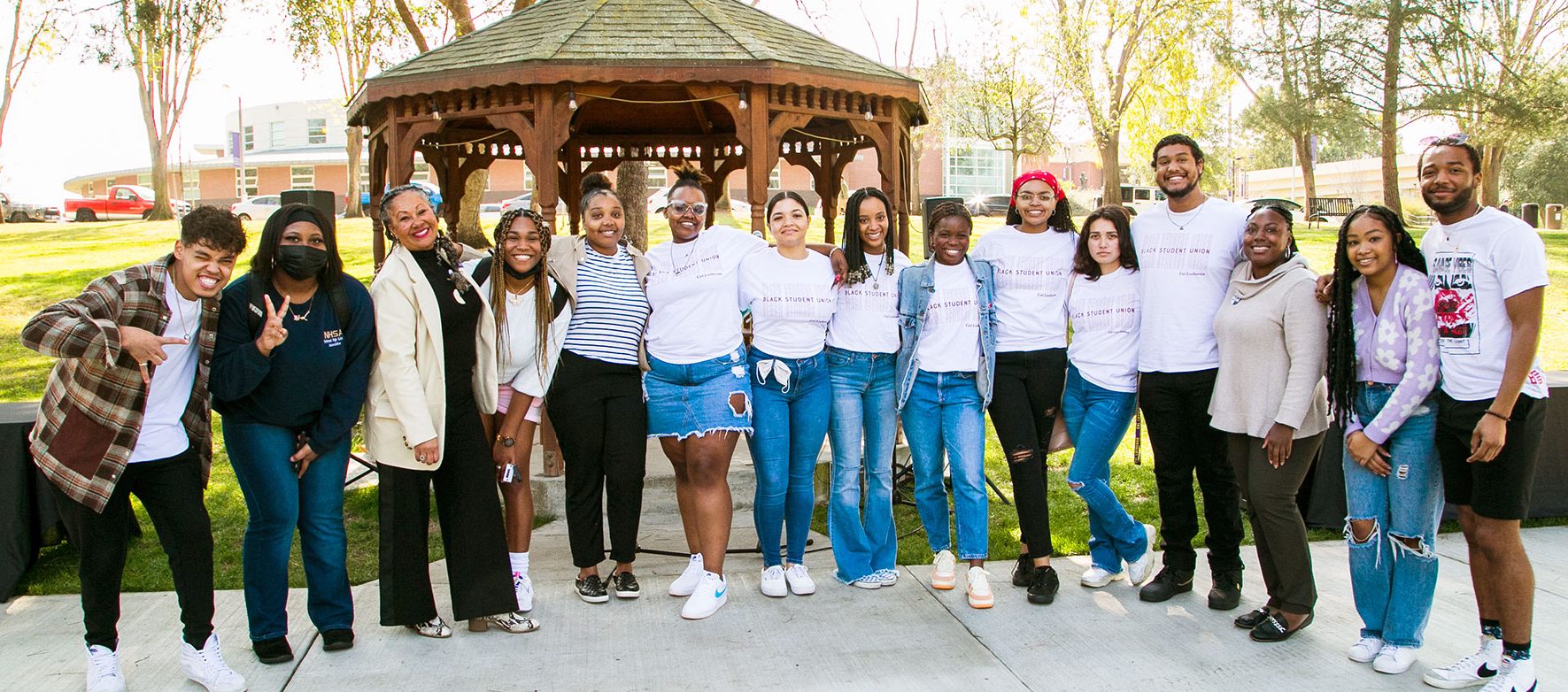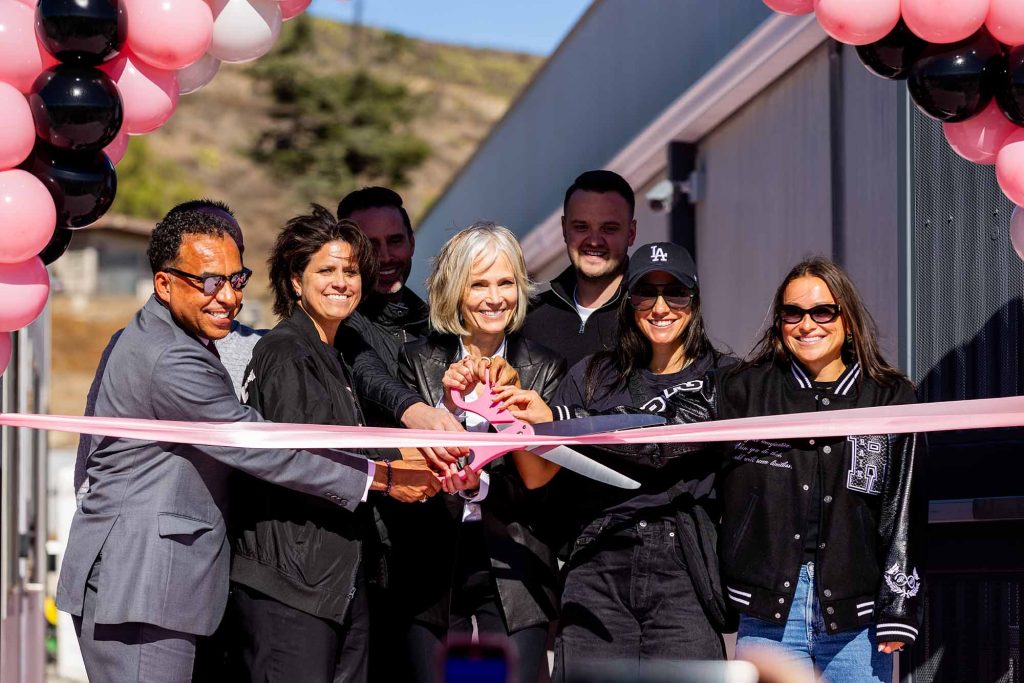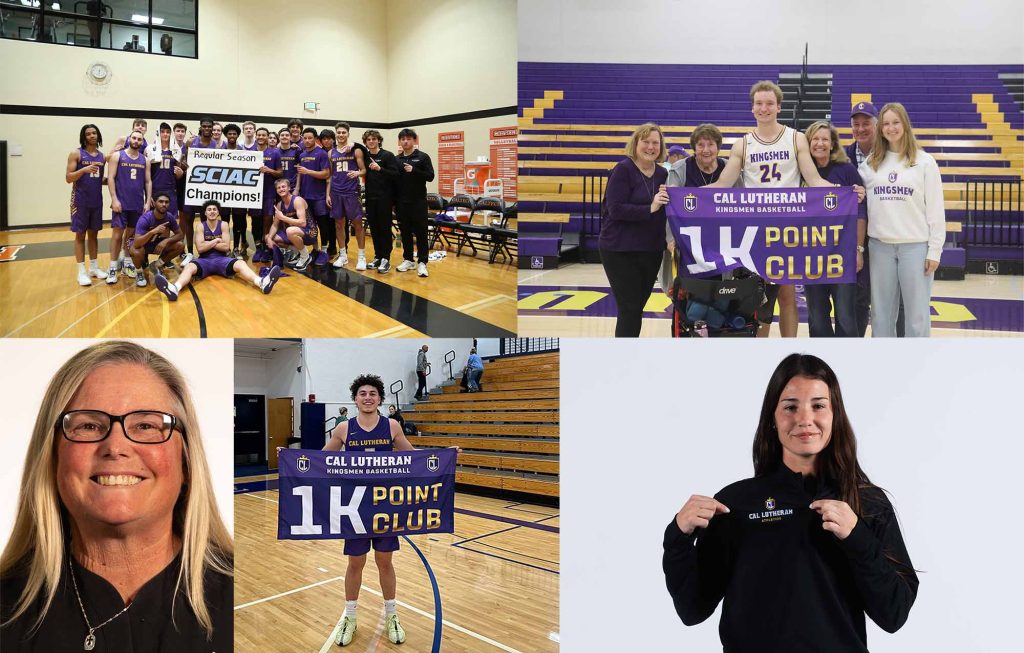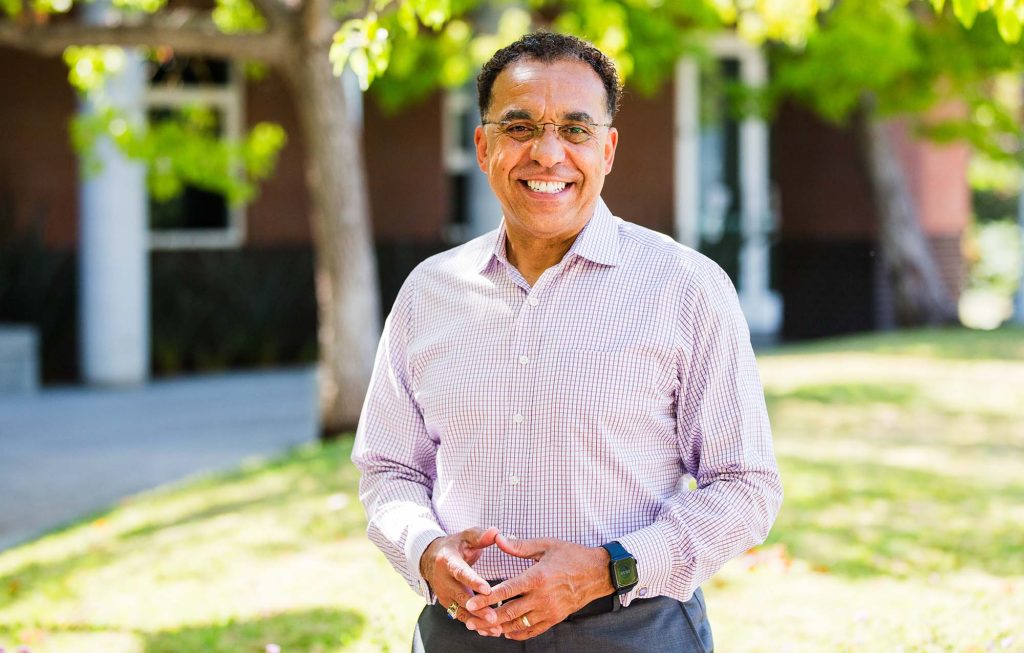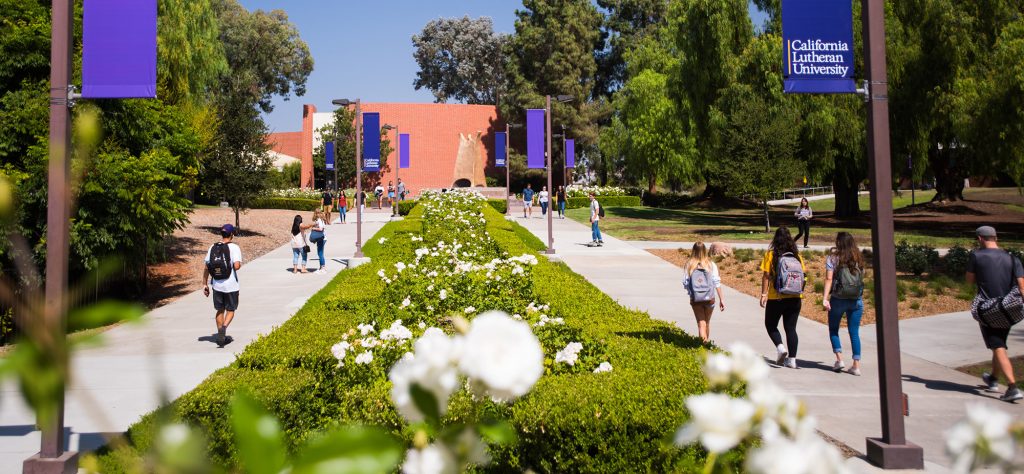Whether we’re using Waze on our phone, poring over the almost extinct but ever-impossible-to-fold paper map, or relying on our innate sense of direction, we all need a guide to get somewhere we’ve never been. At a university, company or other large organization, that guide to the future is often a strategic plan.
Cal Lutheran’s 2022-2027 Strategic Plan, developed with input from all members of the university community, outlines what President Lori Varlotta has called “the top priorities around which the university will concentrate a considerable amount of time, attention and resources through 2027.”
During a consultant-led brainstorming session in November 2021, more than 200 participants helped to craft Strategic Plan objectives and initiatives based on three themes: Student Experience, Fulfilling Work Environment and Distinctive Impact.
With students at the center of the plan, it is no surprise that several of the Student Experience initiatives are coming to life quickly and robustly.
Below are four in-play or soon-to-be-undertaken objectives under the Student Experience theme.
Objective: A Community Strengthened by Diversity, Equity, Inclusion and Justice
“In terms of this objective, the student experience is intertwined with faculty and staff development around DEIJ (diversity, equity, inclusion and justice); we’re serving the students by creating an inclusive learning environment,” said Cristallea K. Buchanan, Cal Lutheran’s inaugural vice president for Talent, Culture and Diversity. Buchanan, along with Lorri Santamaría, director of faculty development and inclusive excellence, and Leigh Fine, learning and development manager, are developing faculty and staff training sessions that allow participants to examine unconscious biases, teaching or service methods, syllabus content, and ways of respectfully interacting with students from BIPOC communities.
A number of the educational programs co-sponsored by the Office of Culture, Talent, and Diversity, various affinity groups and university departments are associated with affinity weeks and months. For example, Cal Lutheran offered several educational programs as part of Indigenous Peoples’ Heritage Month activities, including a talk on nonfederally recognized tribes in California. Other programs celebrating the cultures of our students were offered during International Education Week. The campus also hosted a memorial quilt viewing as part of its recognition of World AIDS Day.
Fine emphasized that DEIJ awareness isn’t a top-down process. “No one owns DEIJ work,” he said. “That runs against the spirit of DEIJ. Inclusion is about recognizing the limits of our own knowledge and that we all have more to learn from others.”
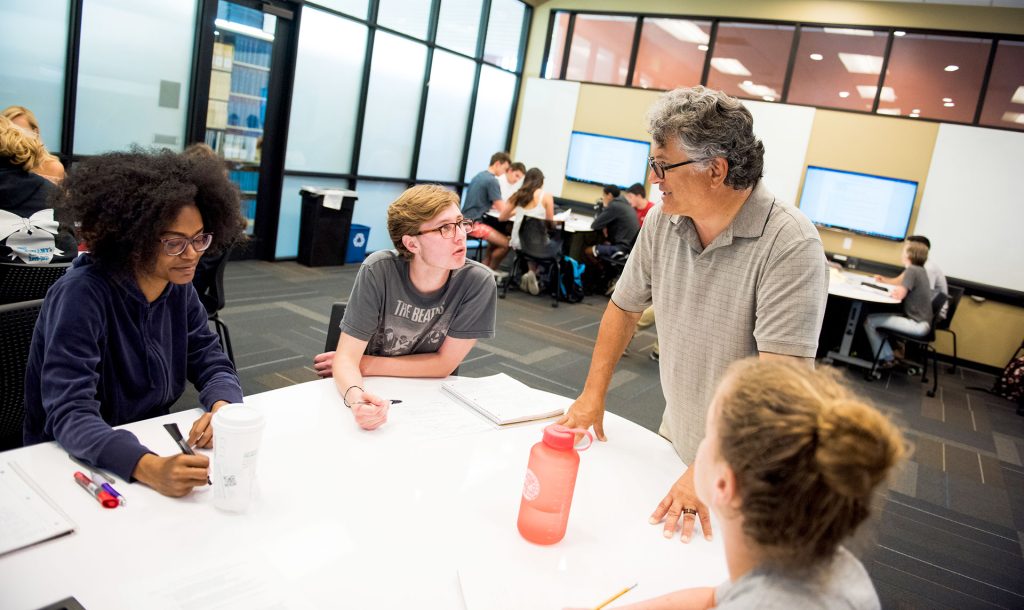
Objective: A SoCal and Student-Centric Campus Plan
For the first time, Cal Lutheran’s Strategic Plan and Campus Plan were developed at the same time so the former can be used to shape the latter. The Campus Plan identifies spaces and places on campus that need to be built, improved or enhanced. As is the case with the Strategic Plan, “the student experience has been front and center in the Campus Plan,” said Ryan Van Ommeren, associate vice president of planning and services.
Currently, the President’s Cabinet and a Campus Plan Leadership Team are prioritizing the projects that they believe will have the most positive impact on students for the resources expended. They are also creating short- and mid-term categories for these priorities.
Short-term projects that have been proposed for authorization (but not completion) in the next three years include: closing Memorial Drive to through traffic and morphing it into a “downtown-type” area with a new or expanded eatery, gathering areas, study spaces and more; adding signs to help people get around campus more easily; reconfiguring the Pearson Library’s interior so it is more of a learning space than a place to store books; and planning and designing track-and-field facilities and an enhanced softball stadium.
One of the most talked-about mid-term projects — those that would take from three to 20 years to complete — is the proposed construction of a student activity center. The recommended, but not approved site, is where the current Nygreen Hall is located.
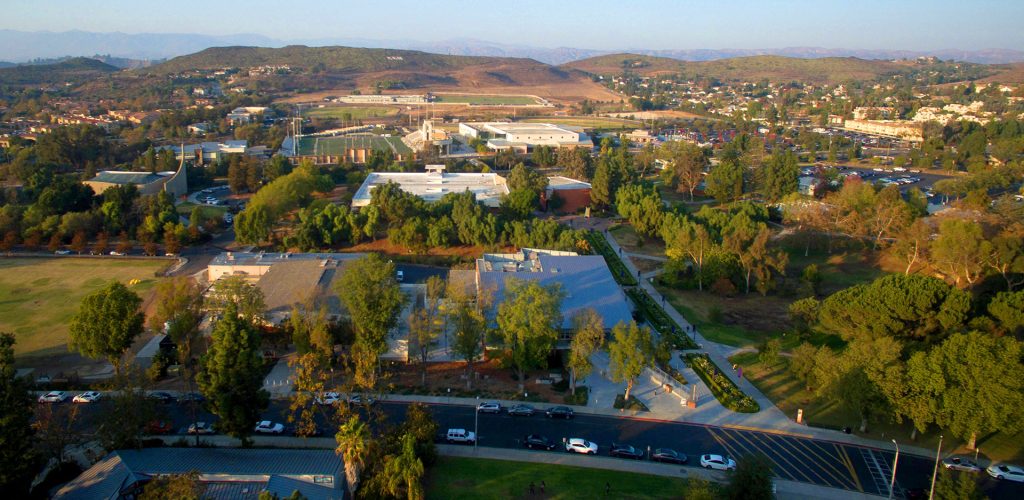
Objective: A Bolstered Technology Infrastructure
Today’s students expect course materials to be delivered in interactive, varied and engaging ways. And one of the many ways to meet this expectation is to add more online components to individual courses and to whole programs. Hence, it makes sense that boosting the technological infrastructure has emerged as a key focus of the 2022-27 Strategic Plan. “Three years ago, the instantaneous pivot that Cal Lutheran faculty made to online instruction was impressive,” said Taiwo Ande, PhD, associate provost for Academic Effectiveness. Moving forward, we have the luxury to be more deliberate about how we transform face-to-face instruction to online or hybrid instruction — a mix of online and in-person classes.”
Since teaching online entails much more than simply recording a lecture or posting a PowerPoint, Cal Lutheran employs a small team of instructional designers who work with faculty to make their course content and pedagogical strategies “online-friendly.” In addition to relying heavily on these internal colleagues, the university is exploring whether it should partner with a third-party firm to help faculty move a few programs to an online format.
Most of the online courses at Cal Lutheran are found in select graduate programs or the Bachelor’s Degree for Professionals program. This year, though, several more traditional undergraduate courses, both existing and new, have been offered online. “Still, the vast majority of Cal Lutheran’s undergraduate courses will continue — long into the future — to be delivered via face-to-face instruction,” said Leanne Neilson, provost and vice president of Academic Affairs. “But in the 21st century, universities must have myriad delivery modes to address differences in learning styles and needs.”
An online curriculum is one way Cal Lutheran plans to expand and improve upon the student experience. “We are putting a lot of quality-assurance processes in place,” Ande said. “These courses will be as good as face-to-face instruction.”
Objective: Development of Purpose and Career Readiness
As a Lutheran institution, Cal Lutheran takes seriously its commitment not only to prepare students for their careers, but also to help them “figure out their vocation and purpose in life,” said Angela Naginey, executive director of Student Success. To facilitate this discernment, Cal Lutheran is in the process of ensuring that faculty advisers and Career Service staff are in sync as they set out to counsel their student advisees. To integrate the services that are offered via faculty advisers on one part of the campus and career counselors on the other, Cal Lutheran submitted an HSI-related grant proposal to the Federal Department of Education. Impressively, the grant, titled Vocational Identity and Talent in Academic Learning (VITAL), was approved. Over the next five years, the university is set to receive $2,807,976 to fund a multidimensional and interdepartmental program that will help prepare students for the workforce and find their vocations.
VITAL has a tripartite aim: to increase retention and completion rates among Hispanic and low-income students; to help prepare students for their careers; and to help students think about their vocation and calling. Among other activities, the program will offer mentor training for faculty and supervisors of student workers; revitalize a peer mentorship program; create internship opportunities; and establish an endowment to fund university-sponsored employment.
Visit the 2022-2027 Strategic Plan website to learn more about the themes and initiatives.


